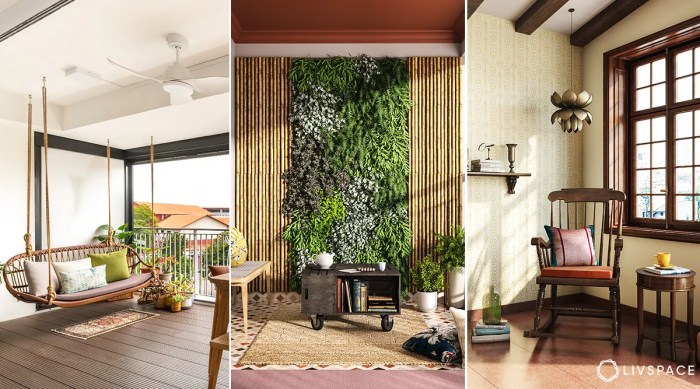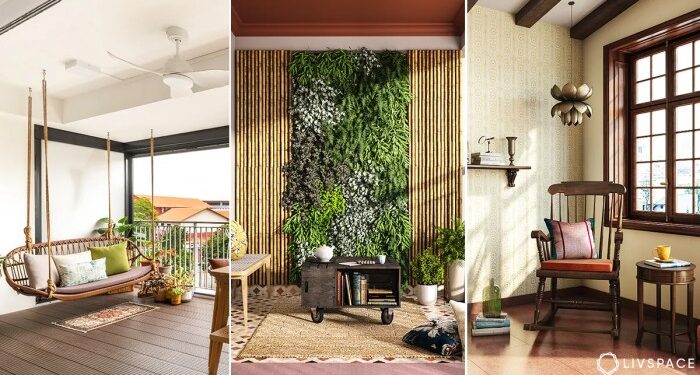Sustainable Furniture and Interior Design Ideas sets the stage for this enthralling narrative, offering readers a glimpse into a story that is rich in detail with a focus on environmentally friendly practices and innovative design concepts. From incorporating eco-friendly materials to reimagining old furniture pieces, this topic delves into the creative and sustainable ways to enhance living spaces.
As we explore the world of sustainable furniture and interior design, we uncover the beauty of merging aesthetics with environmental consciousness, paving the way for a greener and more stylish future for homes.
Sustainable Materials in Furniture Design
When it comes to sustainable furniture design, the choice of materials plays a crucial role in reducing environmental impact while still maintaining quality and aesthetic appeal. Let's explore some common sustainable materials used in furniture design and their benefits.Reclaimed Wood:Reclaimed wood is sourced from salvaged materials such as old buildings, barns, or industrial structures.
Using reclaimed wood not only prevents deforestation but also adds a unique character to furniture pieces with its weathered appearance. Despite being eco-friendly, reclaimed wood is known for its durability and strength, often outlasting new wood materials.Bamboo:Bamboo is a fast-growing, renewable resource that is popular in sustainable furniture design.
It is lightweight yet sturdy, making it ideal for various furniture pieces. Bamboo also has a natural aesthetic appeal with its distinct grain patterns. Additionally, bamboo has a high growth rate, making it a more sustainable alternative to traditional hardwoods.Recycled Metal:Recycled metal, such as aluminum or steel, is another sustainable material commonly used in furniture design.
By repurposing metal scraps and waste, furniture designers can reduce energy consumption and greenhouse gas emissions associated with metal production. Recycled metal furniture is not only environmentally friendly but also durable and resistant to corrosion.These sustainable materials offer not only environmental benefits but also unique textures and finishes that can enhance the overall design of furniture pieces.
By choosing sustainable materials, designers and consumers can contribute to a more eco-friendly and responsible approach to furniture production.
Eco-Friendly Interior Design Practices
When it comes to interior design, incorporating eco-friendly practices is essential for promoting sustainability and reducing environmental impact. By choosing sustainable materials and energy-efficient solutions, you can create a healthier indoor environment while also contributing to a greener planet.
Examples of Eco-Friendly Interior Design Practices
- Using reclaimed or recycled materials for furniture and decor items
- Opting for organic fabrics and textiles for upholstery and curtains
- Installing low-flow plumbing fixtures to conserve water
- Implementing proper insulation and sealing to improve energy efficiency
Incorporating Energy-Efficient Lighting and Appliances
One of the key aspects of eco-friendly interior design is the use of energy-efficient lighting and appliances. By choosing LED lights, smart thermostats, and Energy Star-rated appliances, you can significantly reduce energy consumption and lower utility bills.
Importance of Choosing Non-Toxic Paints and Finishes
When designing indoor spaces, it's crucial to choose non-toxic paints and finishes to ensure the health and well-being of occupants. VOC-free paints and finishes help improve indoor air quality and reduce harmful emissions, creating a safer and more sustainable environment.
Upcycling and Repurposing Furniture

Upcycling and repurposing furniture play a crucial role in sustainable furniture design by giving new life to old items and reducing waste. It involves transforming discarded pieces into something functional and aesthetically appealing.
Creative Ways to Repurpose Old Furniture
Repurposing old furniture items can be a fun and creative way to add unique pieces to your home while reducing your environmental impact
- Turn an old wooden ladder into a decorative shelf by adding wooden planks across the rungs.
- Convert a vintage suitcase into a stylish side table by adding legs to it.
- Transform an unused dresser into a kitchen island by repainting it and adding a butcher block top.
DIY Ideas for Upcycling Furniture
Upcycling furniture through do-it-yourself projects allows you to personalize your space while being environmentally conscious. Here are some DIY ideas to inspire you:
- Give an old chair a fresh look by reupholstering it with a modern fabric.
- Repurpose an old crib into a cozy reading nook by removing one side and adding cushions.
- Create a unique coffee table by upcycling a pallet and adding a glass top for a modern touch.
Biophilic Design in Interior Spaces
Biophilic design is an innovative approach that incorporates nature and natural elements into interior spaces to create a more sustainable and harmonious environment. By integrating elements such as plants, natural light, and organic materials, biophilic design aims to improve well-being, productivity, and overall quality of life for occupants.
Benefits of Biophilic Design
- Improved air quality: Plants act as natural air purifiers, filtering out toxins and improving indoor air quality.
- Stress reduction: Exposure to nature and natural elements has been shown to reduce stress levels and promote relaxation.
- Enhanced creativity: Biophilic design can stimulate creativity and enhance cognitive function, leading to increased productivity.
- Connection to nature: By bringing elements of nature indoors, biophilic design helps occupants feel more connected to the natural world.
Examples of Biophilic Design in Action
- Living green walls: Vertical gardens with a variety of plants not only add a touch of nature but also improve air quality.
- Large windows and skylights: Maximizing natural light intake can reduce reliance on artificial lighting and create a more inviting space.
- Natural materials: Incorporating wood, stone, and other organic materials in furniture and decor can create a sense of warmth and authenticity.
Concluding Remarks
In conclusion, Sustainable Furniture and Interior Design Ideas not only present a fresh perspective on decorating spaces but also offer a holistic approach towards sustainable living. By embracing eco-friendly materials, upcycling old furniture, and incorporating nature-inspired elements, one can create a harmonious and environmentally conscious home environment that reflects both style and sustainability.
Key Questions Answered
What are some common sustainable materials used in furniture design?
Common sustainable materials include reclaimed wood, bamboo, and recycled metal, known for their environmental benefits and unique aesthetic appeal.
How can one incorporate energy-efficient lighting and appliances in interior design?
By choosing LED lighting, energy-efficient appliances, and utilizing natural light sources, one can enhance the sustainability of interior spaces while reducing energy consumption.
What is biophilic design and how does it influence sustainable interiors?
Biophilic design focuses on integrating natural elements like plants and natural light into interior spaces, promoting well-being, productivity, and a connection to nature in sustainable design.













